By: Joe Holz, Director of Sales | Published: February 12, 2024
____________________________________________________________________________________________
AquatiClear™ Circulators are a game-changer when it comes to keeping floating weeds and debris away from your property. As the go-to solution for water movement, AquatiClear features a patented crown-like prop guard that allows debris to slip off the unit, rather than clog. This enables AquatiClear to provide continuous water movement and continuous protection from debris settling near your waterfront. To make the most out of your AquatiClear experience, we’ve compiled a list of the most frequently asked questions about installing and using these versatile and efficient units. While there’s no one-size-fits-all solution, we’ve provided our best advice so you can be confident you’re using AquatiClear in the most efficient and safest way possible.
Do I need it professionally installed, or can I do it myself?
Although professional services are certainly an option, they are not required. However, it is extremely important to have a proper electrical service with appropriate grounding, breaker size, gauge feed wire, and has human-rated GFCI protection. It may be a good idea to have a licensed electrician verify the power source is operating correctly. As for installation, an end user can easily assemble and install the units, but if you would prefer to have an outside service install your unit, you can find a service provider near you by using Kasco’s Find A Dealer tool. Simply provide your zipcode, select AquatiClear under the products category, and choose which type of service you are looking for.

How often should I run it?
Deciding how often to run your unit depends on the type of issues you are addressing. If you are trying to keep floating debris out of a swimming or beach area, a few minutes prior to swimming is often enough time. However, if you are trying to maintain a water current to keep weeds out of a funnel area, 24 hours a day may be required.
Where should the unit point? Can it be customized or adjusted to fit different shapes, shorelines, or docks?
This depends on what you are trying to accomplish. If you are looking to prevent the influx of weeds and debris, pointing the unit to create a counter-current to what is flowing into the area is often best. If your goal is to move debris down a shoreline, pointing horizontal to the shore is recommended. It may be helpful to point the flow of water to an area where you can scoop or rake the debris out of the water for disposal. The simple swivel design on the Universal Mount allows the unit to be easily rotated and pointed in a desired direction, making it the best option for removing debris from the water.
What problems does it address?
AquatiClear can help prevent areas from being taken over with floating weeds and debris by creating a strong current of water. Things like algae, duckweed, floating weeds, and trash can be prevented or directed to areas where they can be removed or moved away from your property. Bottom muck disturbance can occur depending on how the unit is mounted and utilized. It is important to determine if bottom disturbance is allowed/legal on your body of water.
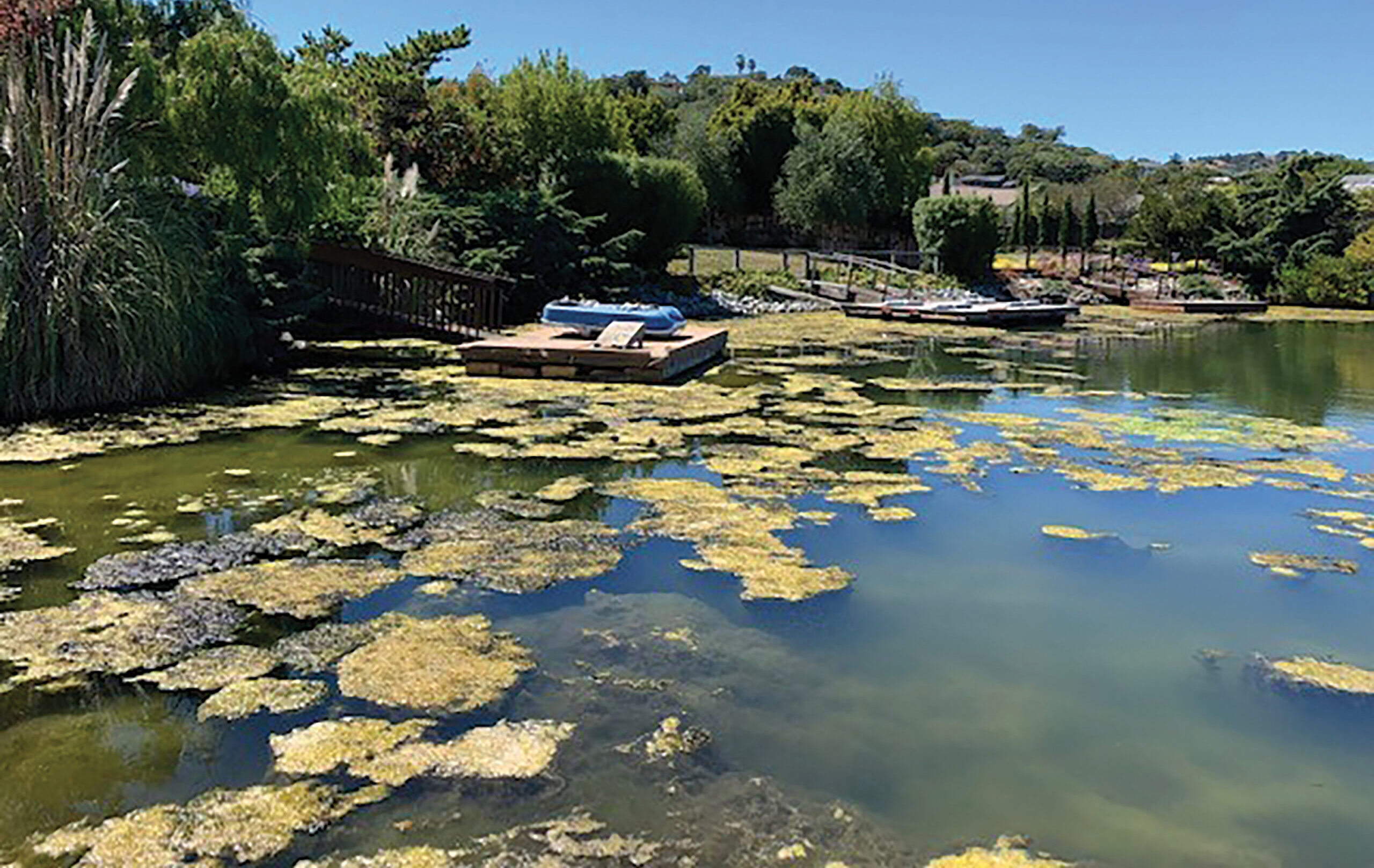
Can it move muck? What happens to the muck?
Yes, AquatiClear can help mitigate muck a bit without disturbing the bottom as the flow of water they create helps increase dissolved oxygen which is necessary for decomposition. They also aid in moving floating debris away which prevents the organic material from sinking and collecting on the bottom. You can read more on how to utilize AquatiClear units to address muck issues in our blog: What the Muck?! A Guide for Waterfront Owners on Enhancing Shoreline Health. It is also important to ensure these units are not pointed down toward the bottom. While this can physically move muck, it is often dispersed from one area to another simply moving the problem. Many states view this as a form of dredging which requires permits and is regulated. If you are on a public body of water, you should research to determine any laws or regulations if you intend to move muck.
Will it protect my dock from ice?
If you are looking to remove or prevent ice, a De-icer would be a better choice due to its design as well as how it is mounted to a dock or boat. While De-icers and AquatiClear units move large volumes of water and create a strong current, they are slightly different in their features and deployment. AquatiClear units are designed to create a strong current for surface debris and are mounted horizontally near the surface, whereas de-icers are mounted vertically and lower in the water column to draw warmer water toward the surface, making them ideal for ice prevention.
What kind of debris can it clear? Are there any limitations?
AquatiClear units can clear several types of debris from floating plants and algae to pop bottles and other trash. Physical limitations may be present depending on the installation site as there is only so much a unit can do to fight against things like tidal and river currents. Certain debris like floating logs and trees are extremely heavy and will not be affected much by an AquatiClear.
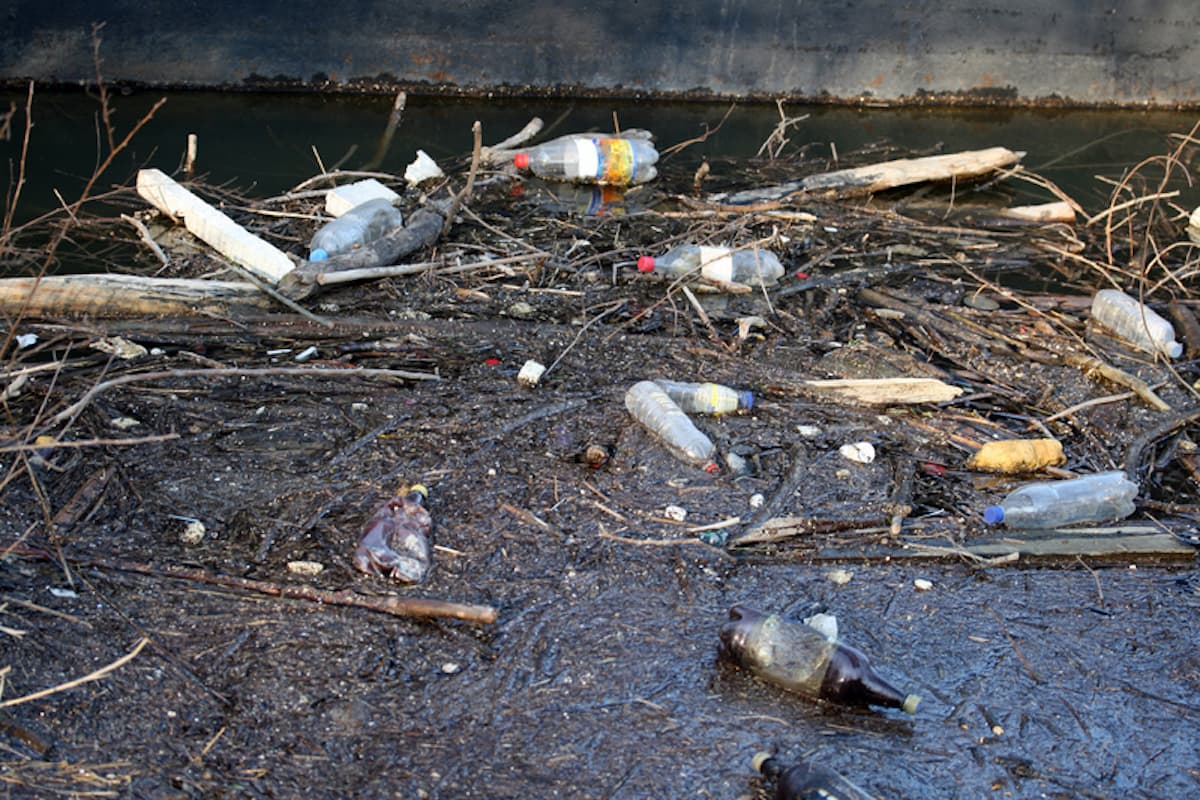
What if there is wind or wave action on the lake? Will that cause interruption or affect performance?
Strong wind and wave action or river and tidal currents can and will affect performance. On a river or when dealing with consistent wind/current direction, it is often best to utilize that current instead of fighting against it. In tidal areas, it is important to ensure that the unit is mounted in a way that it does not operate out of the water.
Can I let it run when I’m not home?
These units are designed to run continuously and do not have a problem running 24/7. However, if AquatiClear units are installed and operating around public areas where people or animals will be in the water, it is not advised to run them without monitoring, simply for the safety aspect of anyone or anything getting into the water while it’s on.
Should I use a dock mount or horizontal float?
This depends on your specific set up. The Universal Mount offers the most adjustability and ease of movement but requires the unit to be physically mounted to a dock or similar structure. The Horizontal Float offers less adjustability but can be installed in any area even if it doesn’t have a dock. If you have a dock or structure to mount to, the universal mount is often the best choice.
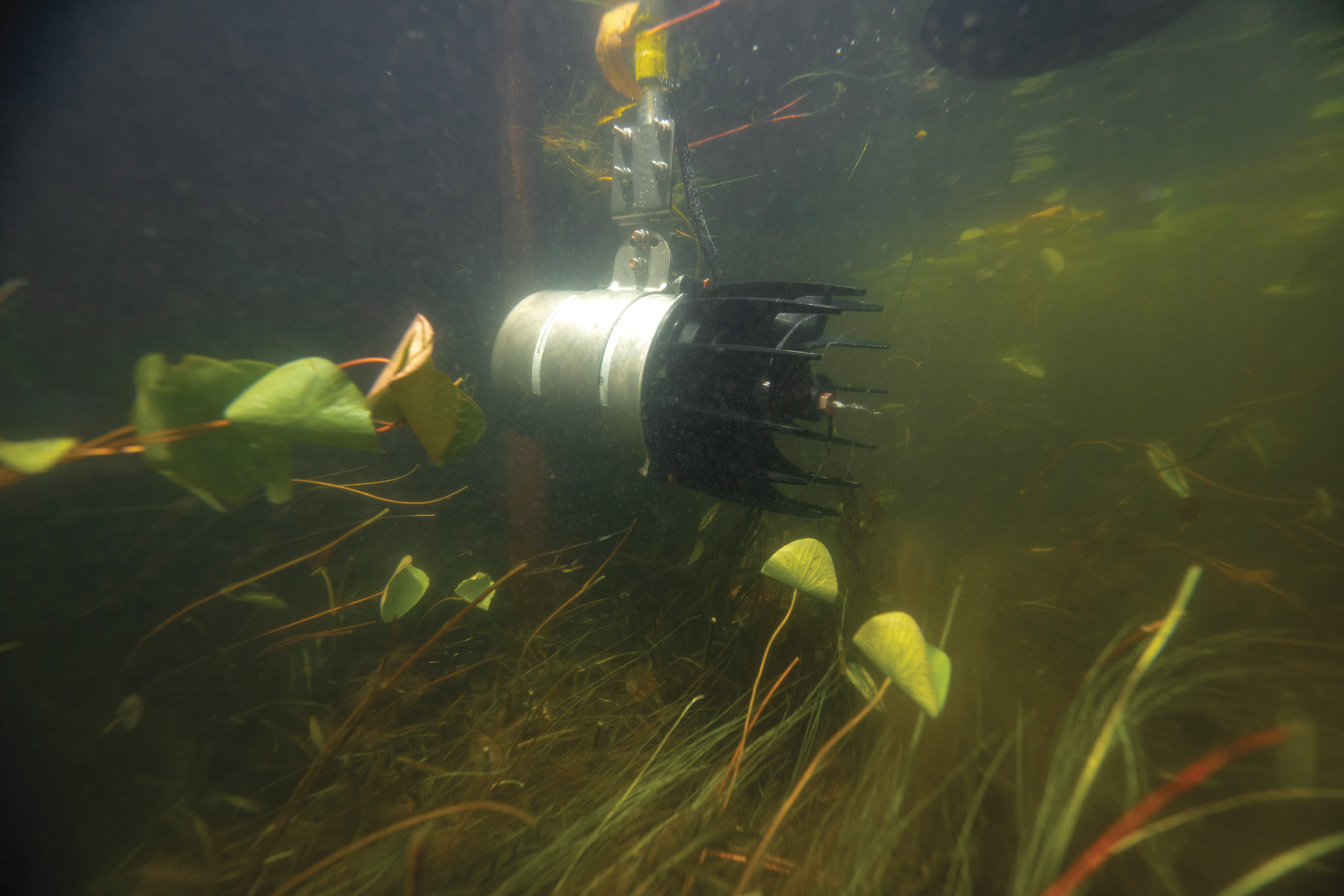
I live on a public lake; do I need permission to use this? How do I find out if it’s legal or not?
Although you do not need permission to push away floating debris, it is always good to check local laws and regulations. Groups like the DNR may question if you are moving the bottom sediment, also known as dredging, which would require some sort of permit. However, units would have to be pointed down for this to occur, which is not a recommended installation position.
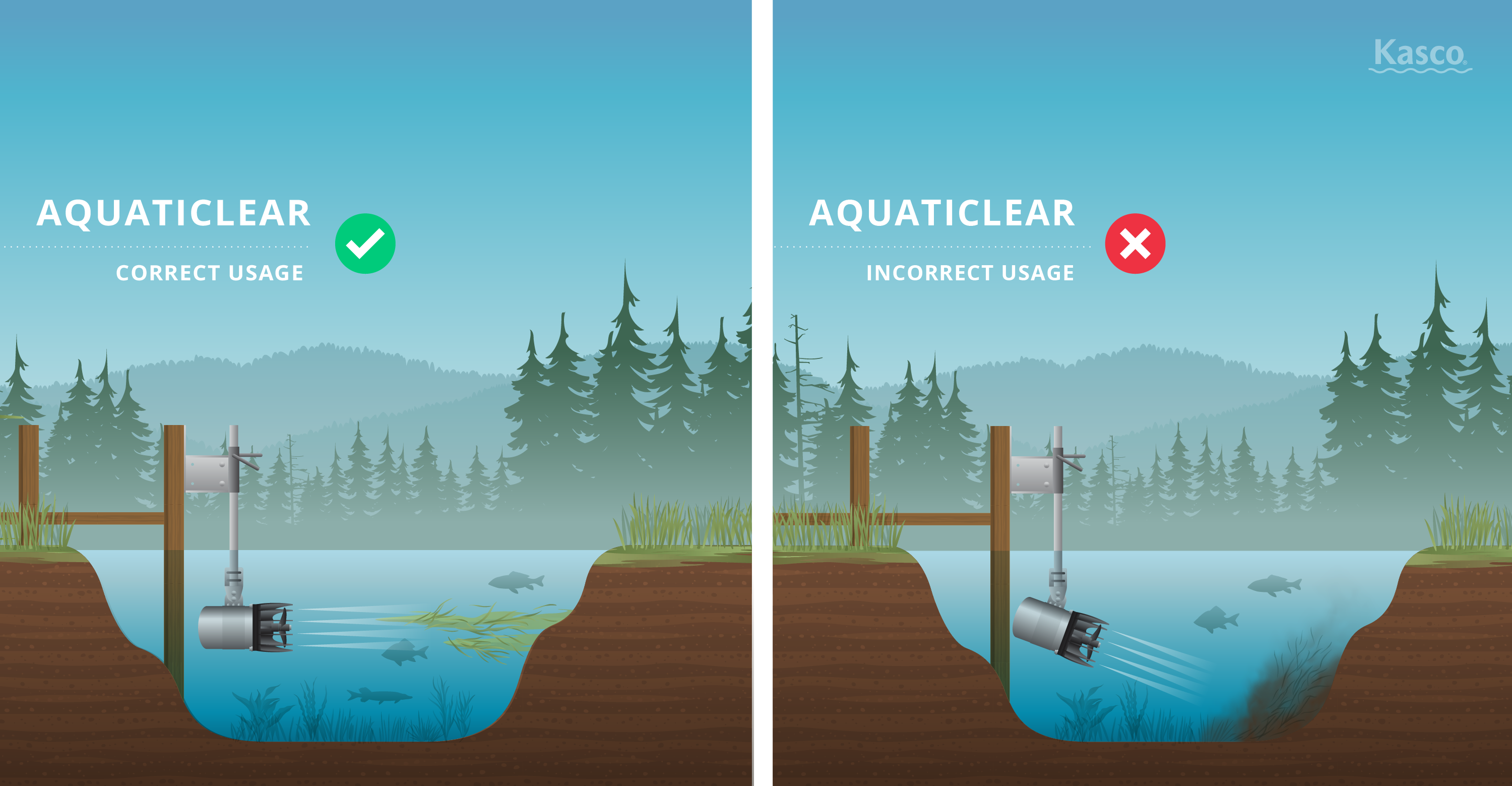
What HP do I need? How much water will that clear? How much water does each HP clear?
If you are intending to clear floating plants, algae and debris, our handy sizing chart is a good start. This chart shows the relative area of influence of each unit. Please keep in mind that tidal conditions, river currents, wind and wave action, and obstructions in the water (boats, pilings, floats, etc.) can all affect the area of influence.

My house is across the road from our beachfront. How do we get power to it?
Ideally, having a local power source installed near the waterfront would be the best option. However, the unit should not be operating in a beach area unsupervised, so a portable generator is also an option for clearing the beach.
How much will it cost to run?
It depends on your local power cost. We have an electrical cost calculator available to determine your estimated running cost per hour based on your local kWh costs. The AquatiClear units are designed to deliver powerful performance with minimal electrical consumption.
How deep does the water need to be? Will it adjust to fluctuating water levels?
The lower the AquatiClear unit is in the water, the higher likelihood you have of disturbing the bottom and the muck, and as explained above, that is considered dredging and may need a permit. With the Shallow Water Install Kit, AquatiClear units can be installed in shallow water applications and/or near the surface without creating an unpleasant “whirlpool” sound.
Fluctuating water levels need to be addressed as well. If you are using a universal mount on a floating dock structure that will move with the water levels, the only concern would be ensuring the unit does not hit or get close to the bottom at low water levels. Care should be taken to ensure the unit does not run out of water at low levels if it is secured to a stationary structure. If the unit is in too deep of water, you may not get the surface movement you are looking for. With the horizontal float option, the unit will adjust with the water level changes. However, care should still be taken to ensure it does not hit the bottom in low-water events.
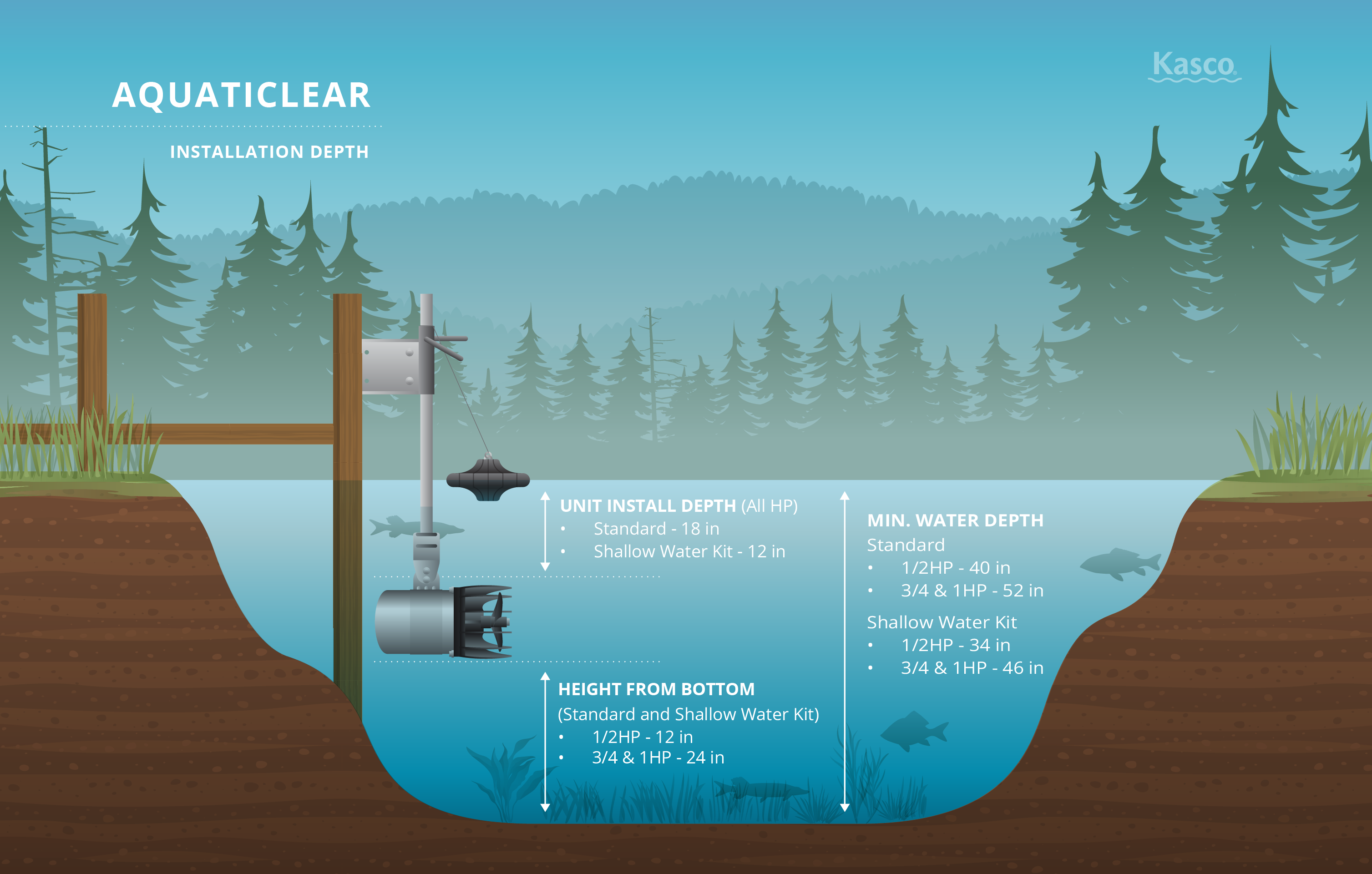
What are standard safety measures I should take? How do I keep my kids and pets safe around it?
Safety measures should be taken when using the AquatiClear unit. For electrical safety, no one should be in the water when the unit is operating AND it should only be operated while utilizing a functioning GFI breaker or outlet with human rated GFI protection. Keeping people and pets clear of the moving propeller is also needed as it can cause harm. If AquatiClear is being used in a swimming area or where people and pets may be in the water, make sure the unit is off and unplugged before the area is used. Safety should be the operator’s sole priority when going in the water where an AquatiClear unit is typically used, even if the unit isn’t running.
In conclusion, AquatiClear stands out as the top choice for moving water, maintaining pristine shorelines, and requiring minimal maintenance. While each situation is unique, the questions and answers provided above encompass the most common concerns, serving as a valuable guide as you install and use your AquatiClear unit.
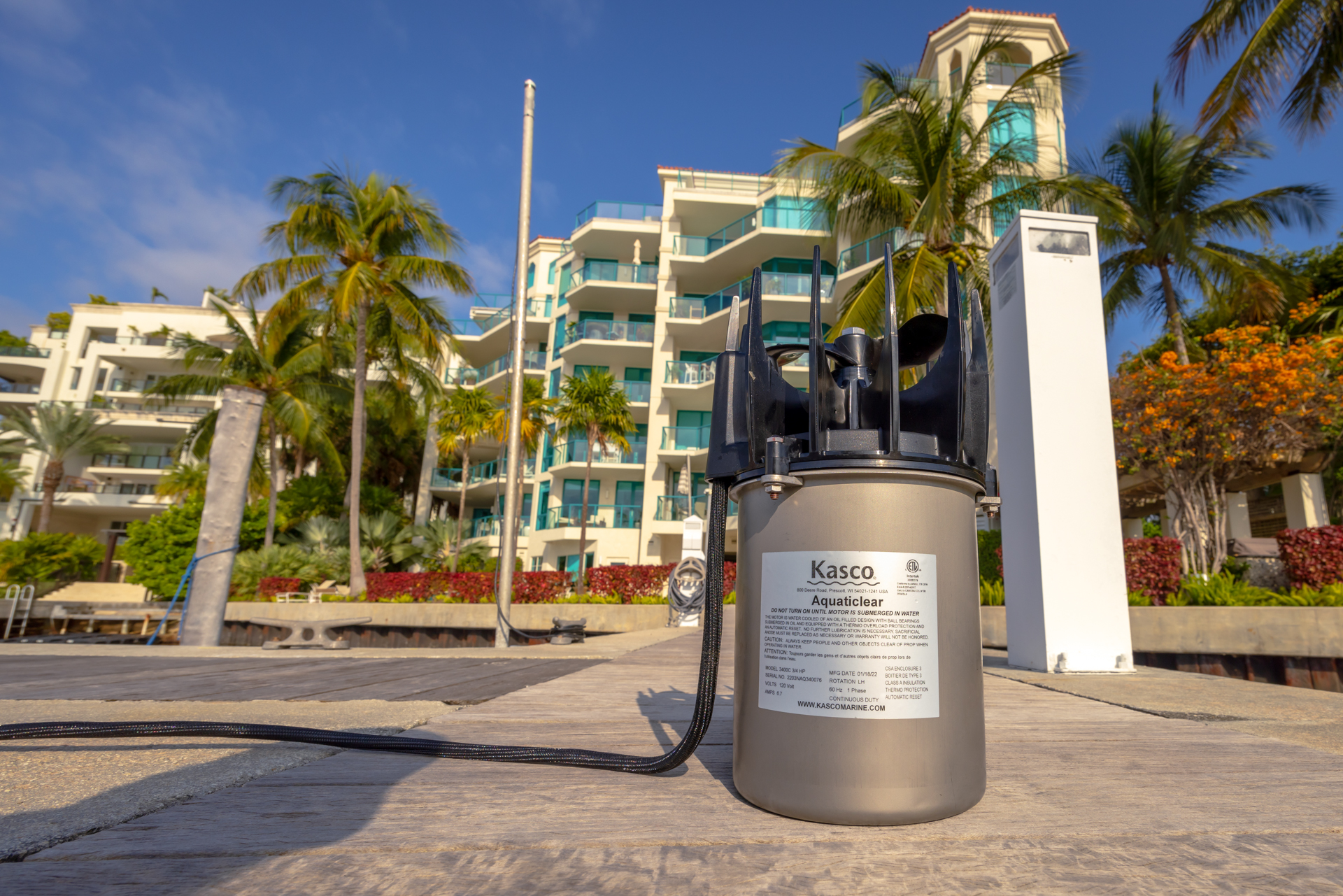 AquatiClear Mounting Options & Installation Tips
AquatiClear Mounting Options & Installation Tips
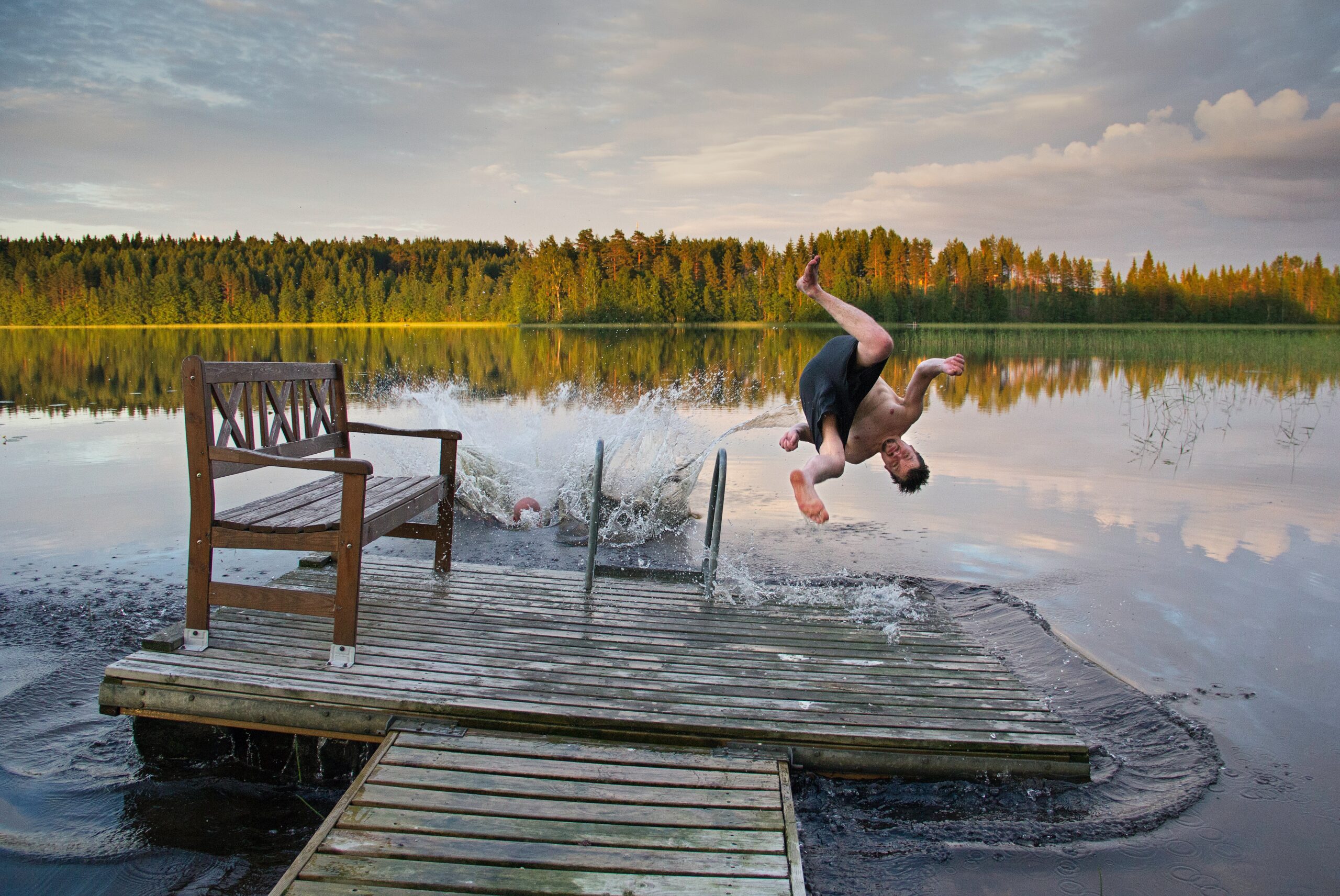 What the Muck?! A Guide for Waterfront Owners on Enhancing Shoreline Health
What the Muck?! A Guide for Waterfront Owners on Enhancing Shoreline Health
